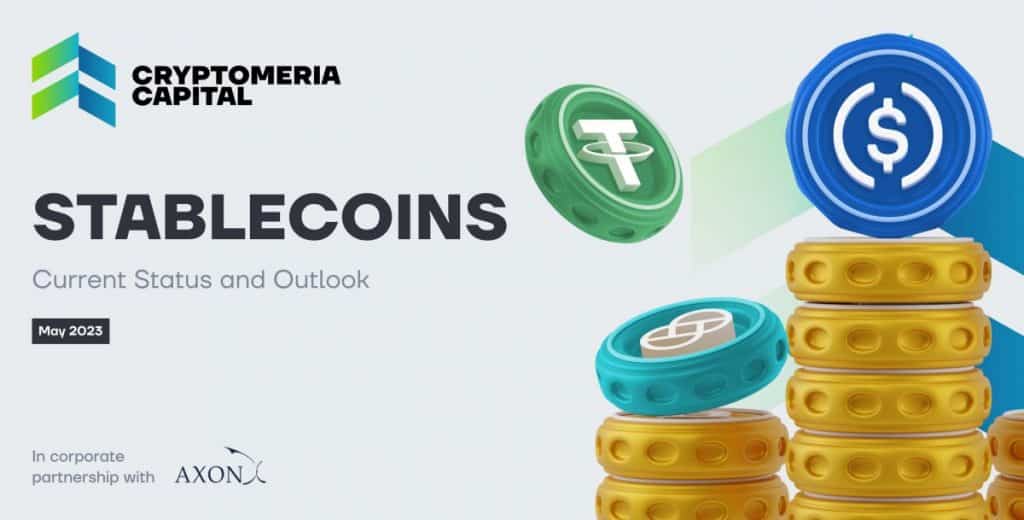Cryptomeria Capital Releases a Comprehensive Overview of Stablecoins



While stablecoins have been around since 2014, their widespread adoption only gained momentum in 2017 with the rise of USDT. In comparison to the broader crypto industry, stablecoins are still considered a relatively young technology that is undergoing continuous testing and refinement.
For all those still unsure about what stablecoins are and how they can be used, Cryptomeria Capital, in partnership with Axon, has just released in-depth research into the world of stablecoins. Entitled “Stablecoins: Current Status and Outlook,” the report offers an overview of all existing stablecoins for everyone who’d like to learn about these tokens.
Stablecoins come in three main forms: traditional asset-backed stablecoins, crypto-backed stablecoins, and algorithmic stablecoins.
- Asset-backed stablecoins are the most common. Examples of such stablecoins include USDT, EURt, USDC, and BUSD.
- Crypto-backed stablecoins follow a similar approach, but instead of fiat currencies, overcollateralized cryptocurrencies serve as collateral to mitigate the impact of sharp exchange rate changes.
- Algorithmic stablecoins, on the other hand, are a distinct breed of stablecoins that utilize blockchain-based smart contracts and algorithms to manage their pegs, typically tied to the US dollar. These algorithms dynamically minimize token price volatility based on predefined expiry dates.
- Hybrid forms of stablecoins have also emerged, combining elements of different types. For example, fractional algorithmic stablecoins employ both collateral and algorithmic volatility reduction to maintain stability. Notable examples of fractional algorithmic stablecoins include FRAX and USDD.
Differentiating between stablecoin types and understanding their collateral can be challenging due to the lack of a single material that clearly illustrates these differences. That’s where Cryptomeria’s report comes in. By providing a detailed analysis of stablecoins and their characteristics, it aims to equip readers with the necessary knowledge to navigate the complex landscape of stablecoins and make informed decisions in this evolving industry.
“Over the past year, stablecoins have experienced periods of high turbulence, making their owners panic and rejoice. Therefore, we found it critical to visualize the real state of the industry,” Cryptomeria explained in a tweet.
Read more:
Disclaimer
In line with the Trust Project guidelines, please note that the information provided on this page is not intended to be and should not be interpreted as legal, tax, investment, financial, or any other form of advice. It is important to only invest what you can afford to lose and to seek independent financial advice if you have any doubts. For further information, we suggest referring to the terms and conditions as well as the help and support pages provided by the issuer or advertiser. MetaversePost is committed to accurate, unbiased reporting, but market conditions are subject to change without notice.
About The Author
Karolina is a writer and journalist with a background in literary studies. She loves exciting tech solutions and art, and NFTs are often a perfect amalgamation of the two. Outside of work, she’s a plant mom, a vintage fashion enthusiast, and a gamer.
More articles

Karolina is a writer and journalist with a background in literary studies. She loves exciting tech solutions and art, and NFTs are often a perfect amalgamation of the two. Outside of work, she’s a plant mom, a vintage fashion enthusiast, and a gamer.





















































